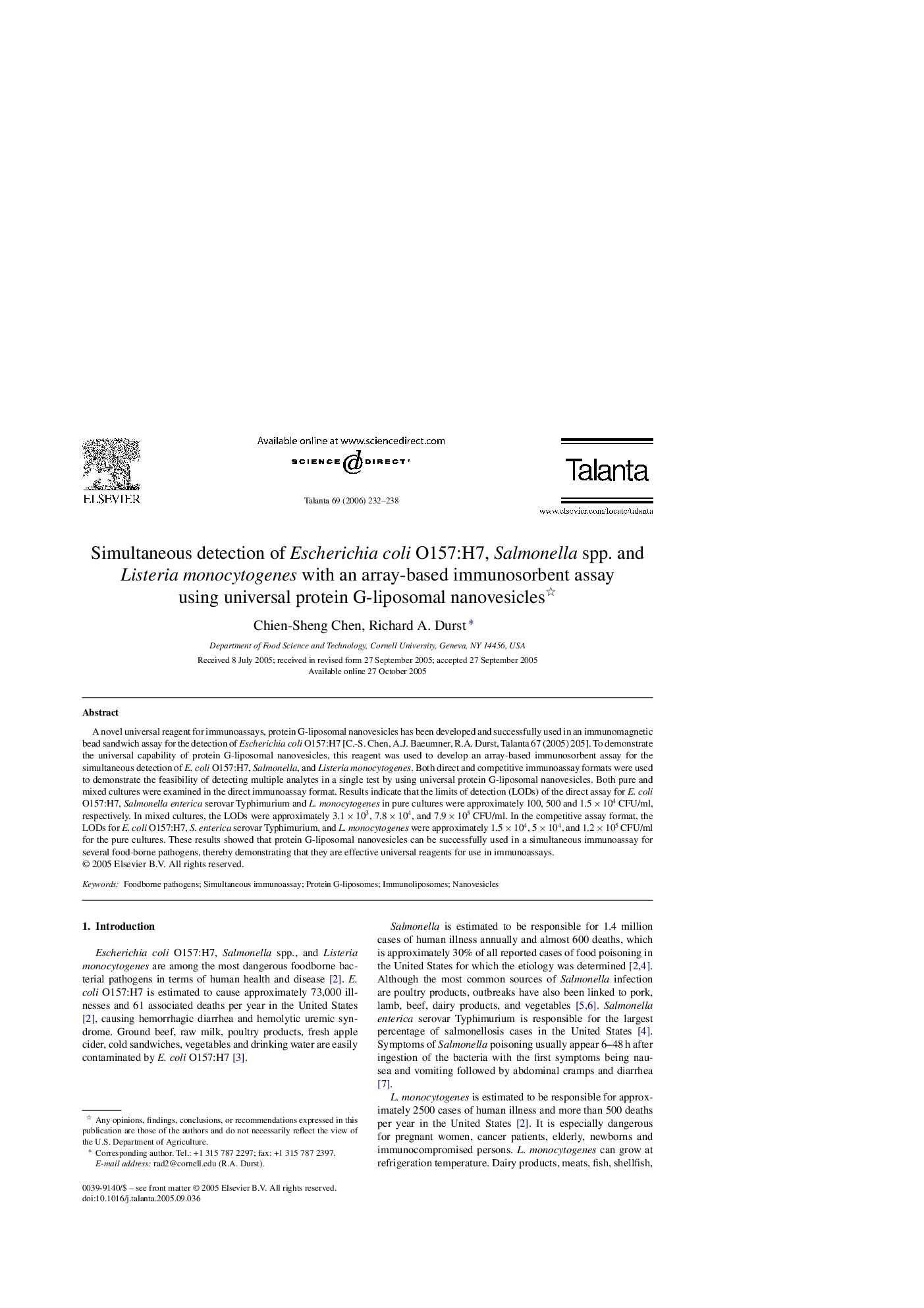| Article ID | Journal | Published Year | Pages | File Type |
|---|---|---|---|---|
| 1245795 | Talanta | 2006 | 7 Pages |
Abstract
A novel universal reagent for immunoassays, protein G-liposomal nanovesicles has been developed and successfully used in an immunomagnetic bead sandwich assay for the detection of Escherichia coli O157:H7 [C.-S. Chen, A.J. Baeumner, R.A. Durst, Talanta 67 (2005) 205]. To demonstrate the universal capability of protein G-liposomal nanovesicles, this reagent was used to develop an array-based immunosorbent assay for the simultaneous detection of E. coli O157:H7, Salmonella, and Listeria monocytogenes. Both direct and competitive immunoassay formats were used to demonstrate the feasibility of detecting multiple analytes in a single test by using universal protein G-liposomal nanovesicles. Both pure and mixed cultures were examined in the direct immunoassay format. Results indicate that the limits of detection (LODs) of the direct assay for E. coli O157:H7, Salmonella enterica serovar Typhimurium and L. monocytogenes in pure cultures were approximately 100, 500 and 1.5Â ÃÂ 104Â CFU/ml, respectively. In mixed cultures, the LODs were approximately 3.1Â ÃÂ 103, 7.8Â ÃÂ 104, and 7.9Â ÃÂ 105Â CFU/ml. In the competitive assay format, the LODs for E. coli O157:H7, S. enterica serovar Typhimurium, and L. monocytogenes were approximately 1.5Â ÃÂ 104, 5Â ÃÂ 104, and 1.2Â ÃÂ 105Â CFU/ml for the pure cultures. These results showed that protein G-liposomal nanovesicles can be successfully used in a simultaneous immunoassay for several food-borne pathogens, thereby demonstrating that they are effective universal reagents for use in immunoassays.
Related Topics
Physical Sciences and Engineering
Chemistry
Analytical Chemistry
Authors
Chien-Sheng Chen, Richard A. Durst,
